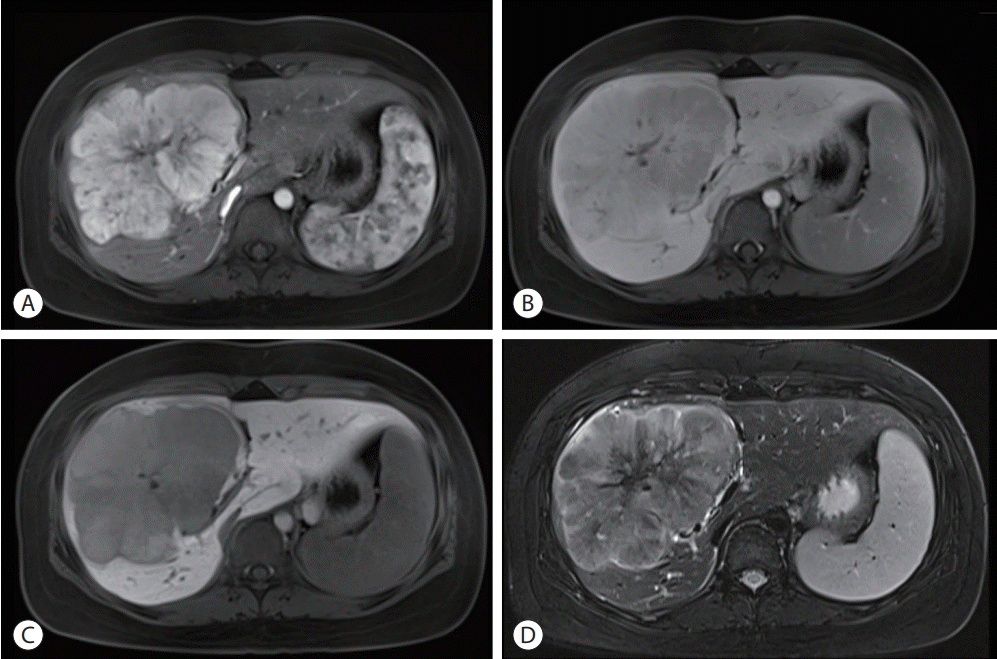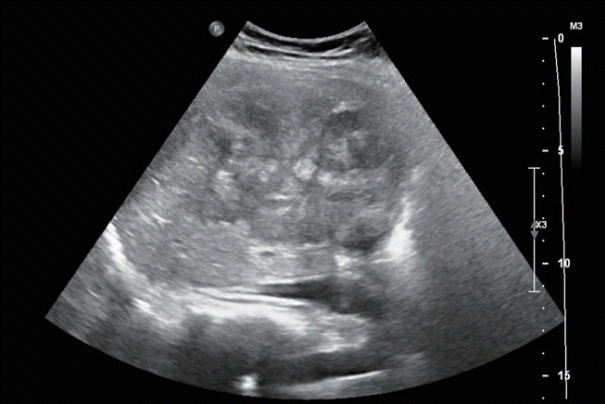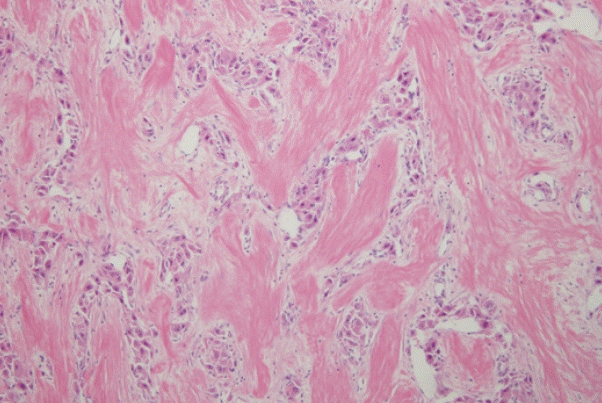1. Edmondson HA. Differential diagnosis of tumors and tumorlike lesions of liver in infancy and childhood. AMA J Dis Child. 1956; 91:168–186.
2. Lin CC, Yang HM. Fibrolamellar carcinoma: a concise review. Arch Pathol Lab Med. 2018; 142:1141–1145.
3. Kang IK, Lee JH, Lee SH, Lee JK, Lee KT, Koh KC, et al. A case of fibrolamellar hepatocellular carcinoma in Korea. Korean J Gastroenterol. 1998; 32:125–130.
4. Kim MJ, Cho EY, Choe MS, Yu ES. Fibrolamellar hepatocellular carcinoma with cytokeratin 7 expression: a case report. J Pathol Transl Med. 2002; 36:344–347.
5. Park YK, Kim YB, Jo SW, Yagn JM, Kim JK, Wang HJ, et al. Fibrolamellar hepatocellular carcinoma: a report of four cases. J Liver Cancer. 2004; 4:73–80.
6. Paradis V. Histopathology of hepatocellular carcinoma. Recent Results Cancer Res. 2013; 190:21–32.
7. El-Serag HB, Davila JA. Is fibrolamellar carcinoma different from hepatocellular carcinoma? A US population-based study. Hepatology. 2004; 39:798–803.
8. Eggert T, McGlynn KA, Duffy A, Manns MP, Greten TF, Altekruse SF. Fibrolamellar hepatocellular carcinoma in the USA, 2000-2010: a detailed report on frequency, treatment and outcome based on the surveillance, epidemiology, and end results database. United European Gastroenterol J. 2013; 1:351–357.
9. Ang CS, Kelley RK, Choti MA, Cosgrove DP, Chou JF, Klimstra D, et al. Clinicopathologic characteristics and survival outcomes of patients with fibrolamellar carcinoma: data from the fibrolamellar carcinoma consortium. Gastrointest Cancer Res. 2013; 6:3–9.
10. Do RK, McErlean A, Ang CS, DeMatteo RP, Abou-Alfa GK. CT and MRI of primary and metastatic fibrolamellar carcinoma: a case series of 37 patients. Br J Radiol. 2014; 87:20140024.
11. Stipa F, Yoon SS, Liau KH, Fong Y, Jarnagin WR, D'Angelica M, et al. Outcome of patients with fibrolamellar hepatocellular carcinoma. Cancer. 2006; 106:1331–1338.
12. Pinna AD, Iwatsuki S, Lee RG, Todo S, Madariaga JR, Marsh JW, et al. Treatment of fibrolamellar hepatoma with subtotal hepatectomy or transplantation. Hepatology. 1997; 26:877–883.
13. Graham RP, Jin L, Knutson DL, Kloft-Nelson SM, Greipp PT, Waldburger N, et al. DNAJB1-PRKACA is specific for fibrolamellar carcinoma. Mod Pathol. 2015; 28:822–829.
14. Vyas M, Hechtman JF, Zhang Y, Benayed R, Yavas A, Askan G, et al. DNAJB1-PRKACA fusions occur in oncocytic pancreatic and biliary neoplasms and are not specific for fibrolamellar hepatocellular carcinoma. Mod Pathol. 2020; 33:648–656.
15. El Dika I, Bowman AS, Berger MF, Capanu M, Chou JF, Benayed R, et al. Molecular profiling and analysis of genetic aberrations aimed at identifying potential therapeutic targets in fibrolamellar carcinoma of the liver. Cancer. 2020; 126:4126–4135.
16. Hirsch TZ, Negulescu A, Gupta B, Caruso S, Noblet B, Couchy G, et al. BAP1 mutations define a homogeneous subgroup of hepatocellular carcinoma with fibrolamellar-like features and activated PKA. J Hepatol. 2020; 72:924–936.
17. Mavros MN, Mayo SC, Hyder O, Pawlik TM. A systematic review: treatment and prognosis of patients with fibrolamellar hepatocellular carcinoma. J Am Coll Surg. 2012; 215:820–830.
18. Kakar S, Burgart LJ, Batts KP, Garcia J, Jain D, Ferrell LD. Clinicopathologic features and survival in fibrolamellar carcinoma: comparison with conventional hepatocellular carcinoma with and without cirrhosis. Mod Pathol. 2005; 18:1417–1423.
19. Moreno-Luna LE, Arrieta O, García-Leiva J, Martínez B, Torre A, Uribe M, et al. Clinical and pathologic factors associated with survival in young adult patients with fibrolamellar hepatocarcinoma. BMC Cancer. 2005; 5:142.
20. Ramai D, Ofosu A, Lai JK, Gao ZH, Adler DG. Fibrolamellar hepatocellular carcinoma: a population-based observational study. Dig Dis Sci. 2021; 66:308–314.





 PDF
PDF Citation
Citation Print
Print





 XML Download
XML Download